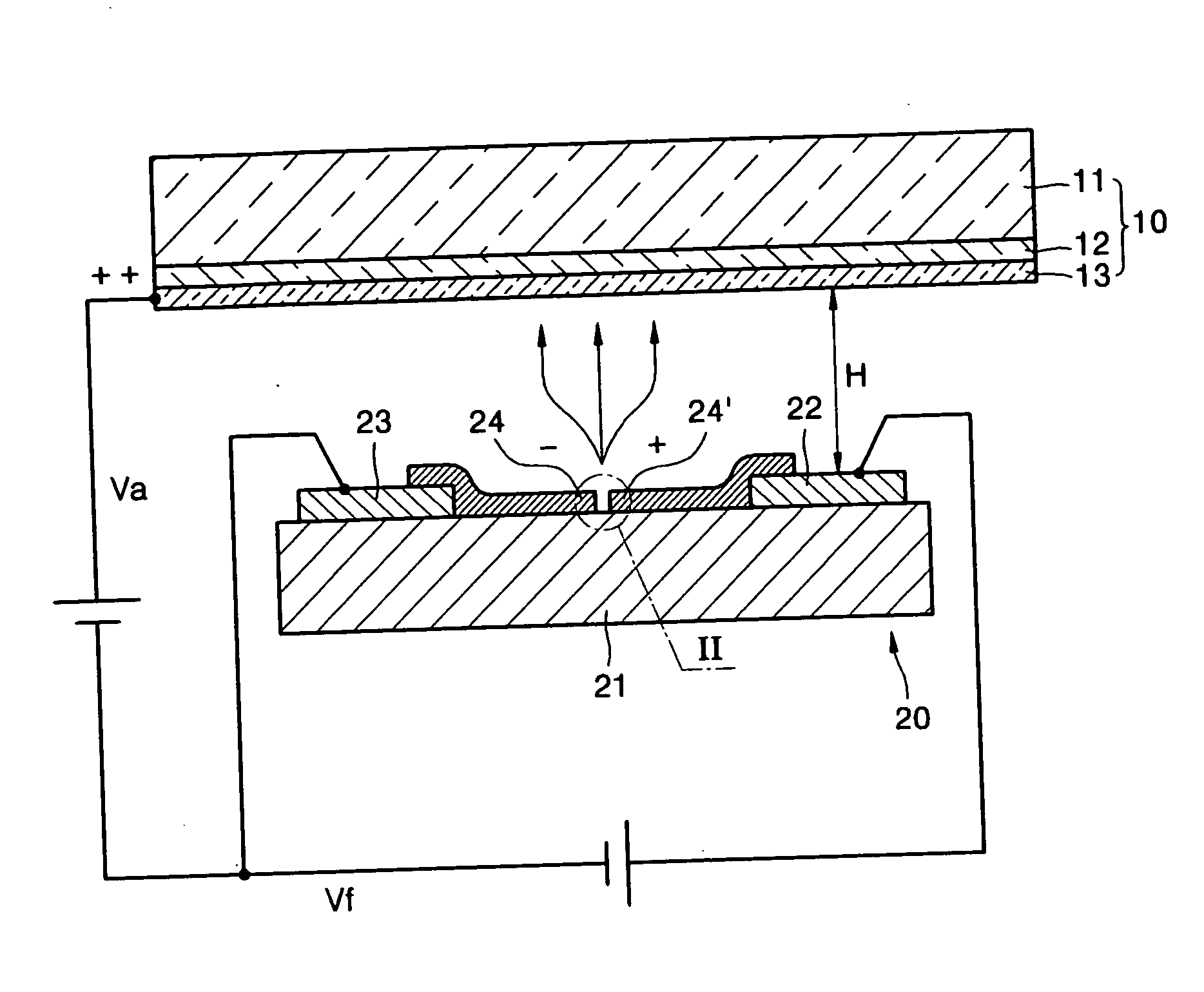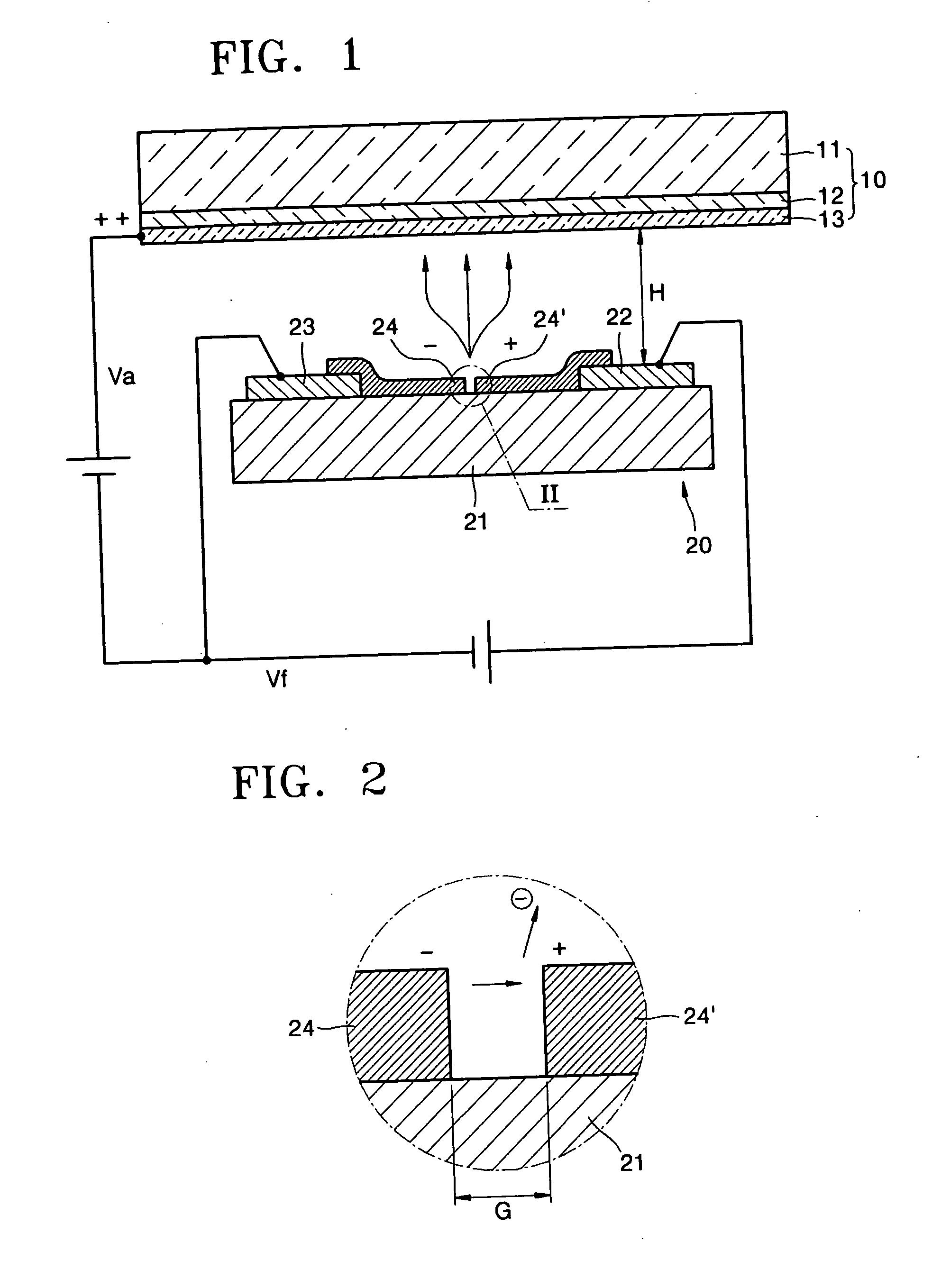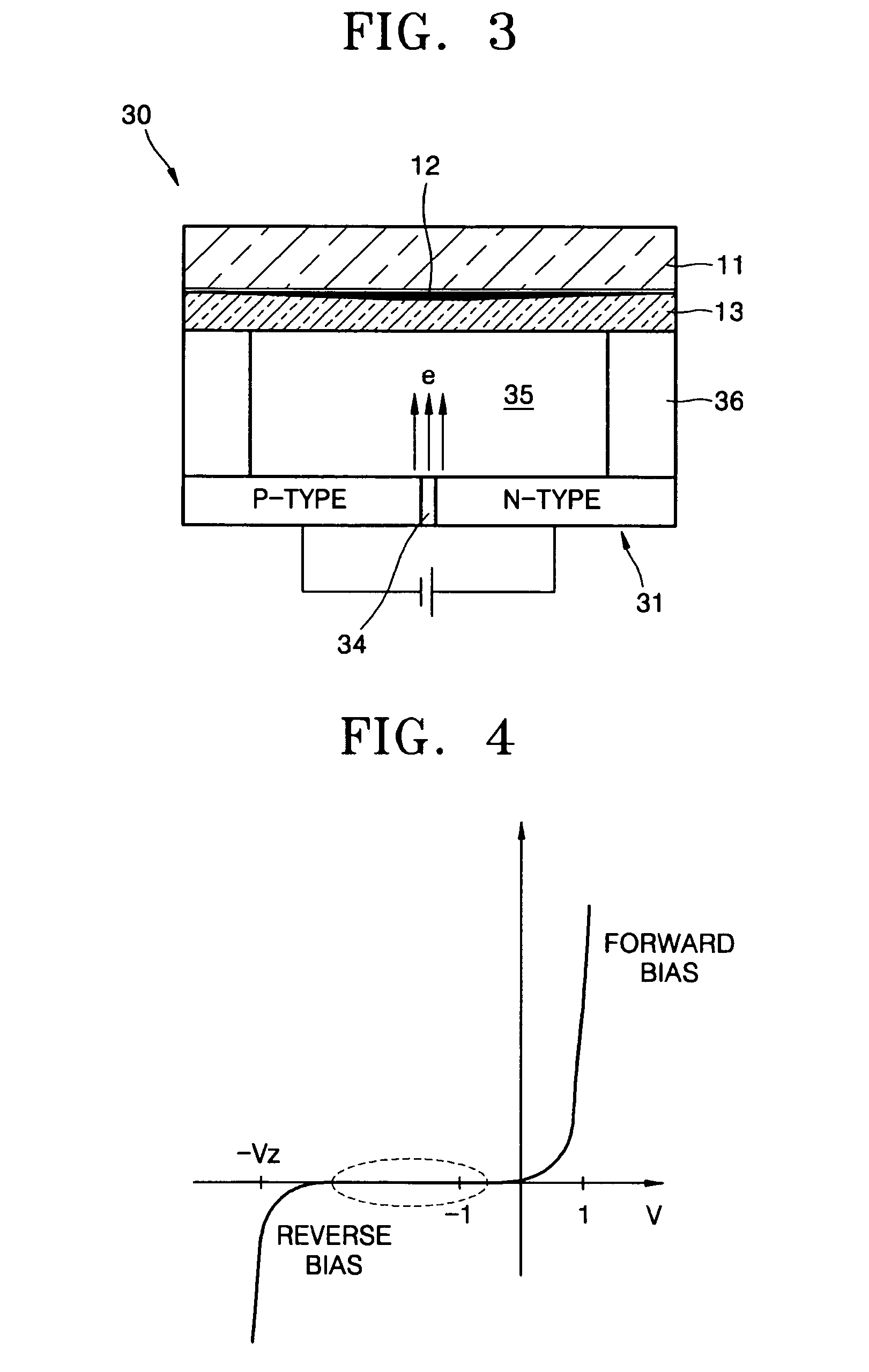Light emitting device using electron emission and flat display apparatus using the same
a technology of light emitting devices and flat display devices, which is applied in the direction of instruments, discharge tubes, luminescnet screens, etc., can solve the problems of low luminous efficiency, high driving voltage and low luminous efficiency, and light emitting devices have a quick response tim
- Summary
- Abstract
- Description
- Claims
- Application Information
AI Technical Summary
Benefits of technology
Problems solved by technology
Method used
Image
Examples
first embodiment
[0033]FIG. 3 is a schematic cross-sectional view of a light emitting device 30 using electron emission according to a FIG. 4 is a graph illustrating current characteristics of a PN junction 31 used in the light emitting device 30 of FIG. 3.
[0034] Referring to FIG. 3, the light emitting device 30 includes the PN junction 31, an anode electrode 12, and a phosphor layer 13.
[0035] The PN junction 31 includes a depletion layer 34 having a predetermined thickness in an area where a p-type semiconductor and an n-type semiconductor are bonded. The anode electrode 12 faces the depletion layer 34 and is separated from the depletion layer 34 by a predetermined distance. The phosphor layer 13 is attached to a surface of the anode electrode 12. The thickness of the depletion layer 34 may be from about 1 nm to about 100 nm.
[0036] The light emitting device 30 may further include a substrate 11 on which the anode electrode 12 and the phosphor layer 13 are sequentially formed. The PN junction 31 ...
second embodiment
[0045]FIG. 5 is a schematic cross-sectional view of a light emitting device 130 using electron emission according to a
[0046] Referring to FIG. 5, the light emitting device 130 includes a plurality of PN junctions 131, an anode electrode 12, and a phosphor layer 13. The light emitting device 130 may further include a first substrate 37 on which the PN junctions 37 are formed, a second substrate 11 on which the anode electrode 12 and the phosphor layer 13 are sequentially formed, and a plurality of spacers (not shown) which maintain the space 35 between the first substrate 37 and the second substrate 11. The first substrate 37 and the second substrate 11 may be sealed with glass frit. The light emitting device 130 can also generate visible light using the two methods described above.
third embodiment
[0047]FIG. 6 is a schematic cross-sectional view of a light emitting device 230 using electron emission according to a
[0048] Referring to FIG. 6, the light emitting device 230 includes a monocrystalline substrate 231, an anode electrode 12, and a phosphor layer 13. The entirety of the monocrystalline substrate 231 is doped with p-type impurities, and PN junctions are formed on a surface of the monocrystalline substrate 231. The PN junctions each include a depletion layer 234 having a predetermined thickness, and the depletion layer 233 is formed by diffusing n-type impurities 232 into the surface of the monocrystalline substrate 231. The anode electrode 12 is opposite the monocrystalline substrate 231, and the phosphor layer 13 is attached to a surface of the anode electrode 12. The light emitting device 230 may further include a front substrate 11 on which the anode electrode 12 and the phosphor layer 13 are sequentially formed, and the thickness of the depletion layer 233 may be f...
PUM
| Property | Measurement | Unit |
|---|---|---|
| thickness | aaaaa | aaaaa |
| pressure | aaaaa | aaaaa |
| thickness | aaaaa | aaaaa |
Abstract
Description
Claims
Application Information
 Login to View More
Login to View More - R&D
- Intellectual Property
- Life Sciences
- Materials
- Tech Scout
- Unparalleled Data Quality
- Higher Quality Content
- 60% Fewer Hallucinations
Browse by: Latest US Patents, China's latest patents, Technical Efficacy Thesaurus, Application Domain, Technology Topic, Popular Technical Reports.
© 2025 PatSnap. All rights reserved.Legal|Privacy policy|Modern Slavery Act Transparency Statement|Sitemap|About US| Contact US: help@patsnap.com



